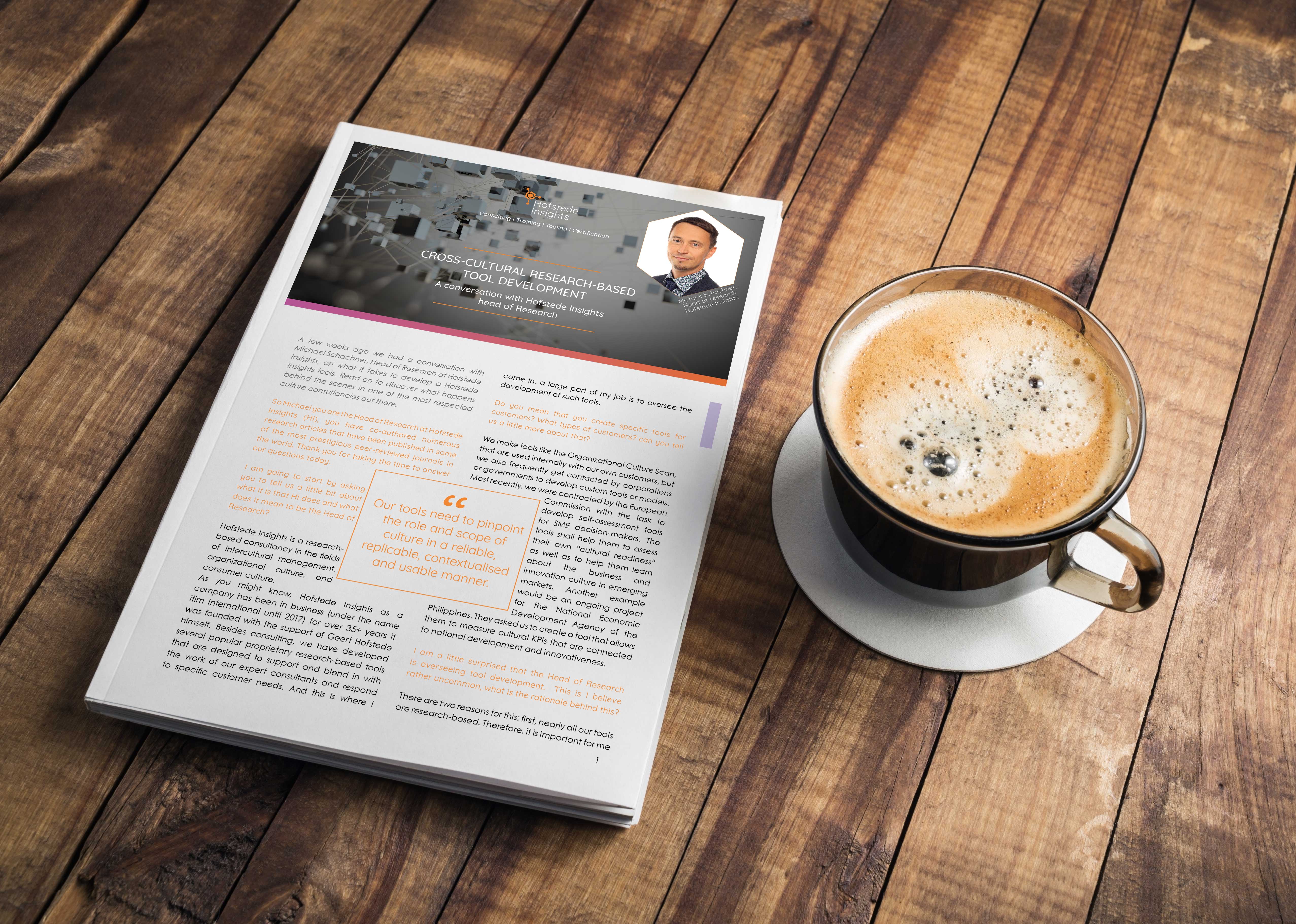- Solutions
-
Solutions
Transform your business with the power of culture.
-
-
Solutions for Individuals
Whether you work in a management team of a multicultural company or work as a consultant in the cultural field, we have solutions tailored to your business needs.
-
Solutions for Organisations
By utilising our research-based and practical approach we ensure that the results of the interventions are immediately applicable and with lasting effects.
-
-
- Resources
- Insights
- Network
- About us
A conversation with our head of research about cross-cultural research-based tool development

A few weeks ago we had a conversation with Michael Schachner, Head of Research at The Culture Factor Group, on what it takes to develop the The Culture Factor Group tools. Read on to discover what happens behind the scenes at one of the most respected culture consultancies out there. 
Question: Michael, you are Head of Research at The Culture Factor Group, and you have co-authored numerous research articles that have been published in some of the most prestigious peer-reviewed journals in the world. Thank you for taking the time to answer our questions today.
I am going to start by asking you to tell us a little bit about what it is that The Culture Factor Group does and what it means to be Head of Research?
Answer: The Culture Factor Group is a research-based consultancy in the fields of intercultural management, organisational culture, and consumer culture.
As you might know, The Culture Factor Group as a company has been in business for 35+ years. Besides consulting, we have developed several popular proprietary research-based tools that are designed to support and blend in with the work of our expert consultants and respond to specific customer needs. And this is where I come in; a large part of my job is to oversee the development of such tools.
Question: Do you mean that you create specific tools for customers? What types of customers? can you tell us a little more about that?
Answer: We make tools like the Organisational Culture Scan, that are used internally with our own customers, but we also frequently get contacted by corporations or governments to develop custom
tools or models. Most recently, we were contracted by the European Commission with the task to develop self-assessment tools for SME decision-makers. The tools will help them assess their own “cultural readiness” as well as to help them learn about the business and innovation culture in emerging markets. Another example would be an ongoing project for the National Economic Development Agency of the Philippines. They asked us to create a tool that allows them to measure cultural KPIs that are connected to national development and innovativeness.
Question: I am a little surprised that the Head of Research is overseeing tool development. I believe this is rather uncommon. What is the rationale behind this?
Answer: There are two reasons for this: first, nearly all our tools are research-based. Therefore, it is important for me to oversee the tool development as an assurance of the high-quality standards that our name stands for, and that we promise to our customers. We call our approach to tool development “cross-cultural research-based tool development”. It is a data-driven and transparent approach. This means we don’t just come up with questions and report the answers, but that the development is a long process with multiple testing and safeguarding steps. Our tools need to pinpoint the role and scope of culture in a reliable, replicable, contextualised, and usable manner. It also means that the person in charge needs to be able to understand both the academic and the business world, in most cases that’s me. I act as bridge between the two universes. It is rather difficult to find an external provider with a knowledge base as rich as the one we have in-house, so we are able to control the end product from start to finish. Secondly, tool development is at the core of our business. We have a lot of experience in building tools with our proprietary software and we have teams of experts that specialise in doing just that. So tool development has historic importance in our company and many HR consultancies rely on our survey and reporting software for human resource development tools. But this is a different topic...
Question: You are telling us that there is a process, and you even gave it a name, can you describe the process in a little more detail?
Answer: The first step is to define the goal of the tool. A tool should never be the goal in itself. Depending on how well the client knows the requirements for the tool beforehand, this step can take almost as much time as the tool development. I say this also because I consider it the most important part of the development process. It tends to consist of at least one physical meeting with the client. In addition, we usually interview the end-clients of the tool. In the case of the EU project I mentioned earlier on, we travelled throughout Europe to meet representatives of SMEs and innovation agencies. If the budget is smaller, we do phone interviews or we send out online surveys. There is always a point of no return, so it is critical to get the customer requirements right the first time.
Once the goal of the tool is clear, we start with the development of the questionnaire. For this
step, we often take advantage of our academic connections and involve external experts. Nobody can be an expert in everything, so this needs to be decided case by case. However, for many classical cross-cultural topics, we involve Dr. Minkov, co-author of Hofstede’s bestseller “Cultures and Organizations”. He’s also the one who updated the 5th dimension and added a sixth dimension to Hofstede’s model, by the way. Like this, we ensure to get scientifically sound AND meaningful results.
For most projects, it is critical to allow respondents to answer in their native language. The questionnaire is usually developed in English and then...
Read the full article at the link.